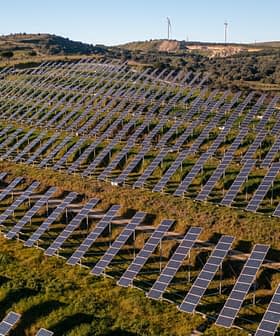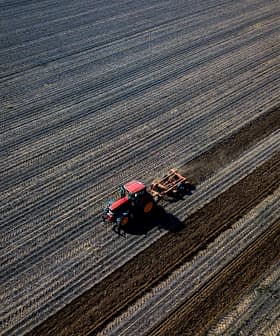Study: Climate Change Is Making Droughts More Frequent and Severe
Researchers are worried about the increasing phenomenon of co-occurring droughts, which are 10 times more likely now than in the previous century.
Widespread droughts occurring simultaneously in different regions of the planet may be part of a worsening trend that will exacerbate water insecurity and hurt agriculture, according to a new study.
The research published in Nature Climate Change concluded that extreme, repeated co-occurring (also known as compound) drought events pose a substantial threat to increasingly interconnected socio-economic systems.
A robust increase in simultaneous droughts under high emission scenario can pose a serious threat to global food security and water availability in a future warmer climate.
A second study published in the same journal highlighted how the western United States is experiencing a megadrought, the likes of which have not been seen in the last 1,200 years.
By examining trees and other remains preserved in Native American archeological sites, researchers compared the current 22-year dry period to what they believe happened in 800 C.E. Even an extreme multi-year event recorded in 1500 does not match the current situation.
See Also:Farmers Are Facing the Brunt of Portugal’s Worsening DroughtBoth studies found that human activities and the dependency on fossil fuels are significant causes of drought probability and severity.
In the most recent Olive Oil Times survey, nearly one-third of producers said droughts had impacted their 2021 harvest season.
According to the western United States study, which also measured the progressive loss of soil moisture during the worst historic prolonged droughts, human contribution is responsible for 72 percent of megadrought’s likeliness and severity.
Compared with the 20th century, the instances of co-occurring droughts in the 21st century also increased substantially.
“Our analysis shows an increased probability of experiencing simultaneous droughts across multiple regions by the mid and late 21st century relative to the late 20th century, with continuous fossil fuel dependence,” Jitendra Singh and Deepti Singh, environmental researchers at Washington State University, told Olive Oil Times.
“The risk of simultaneous droughts is expected to increase by about 40 percent and 60 percent by the mid and late 21st century, respectively,” they added.
The study focused on the connections among continued fossil-fuel dependency, increasing global temperatures, El Niño and La Niña phenomena (also known as ENSO) and droughts.
The scenario is known as RCP 8.5 (“business as usual”) and accounts for an increase in average global temperatures of more than 4.5 ºC by the end of the 21st century.
“As shown in our study, a robust increase in simultaneous droughts under a high emission scenario can pose a serious threat to global food security and water availability in a future warmer climate,” Singh and Singh said.
According to the scientists, current simultaneous drought events are driven by ENSO events in almost two cases out of three. They warned that the current trend toward future warming might amplify ENSO events’ impact on such droughts.
“Based on the simulations we use, the likelihood of El Niño and La Niña events is projected to increase as well,” Singh and Singh said. “So they are likely to occur more often, contributing to the large increase in the risk of simultaneous droughts.”
Central North America, Central America and the Amazon are more likely to experience drought in the future compared to East and South Asia, the researchers noted.
“Such regional changes in drought conditions are associated with changes in precipitation and evapotranspiration characteristics,” Singh and Singh said.
This is not good news for farmers or the public at different latitudes. In this scenario, researchers found that the increased probability and severity of co-occurring droughts cause a many-fold increase in agricultural areas and people affected.
See Also:Weakened Gulf Stream Will Have Major Impact on European Agriculture, Scientists PredictThe paper focuses on the global food network and its complexity, hinting how co-occurring droughts in just a few highly relevant food-producing areas could provoke severe consequences for food security and prices, especially in socio-economically vulnerable regions.
The researchers found that about 700,000 square kilometers – an area larger than Afghanistan – is expected to experience drought each year, representing a 10-fold increase over the late 20th century.
Recent drought events examined by the researchers include those from 2005 to 2007 throughout many regions.
The researchers said these examples “caused the total grain production to drop by 40 million metric tons [below] the requirement, which contributed to high corn prices in 2008.”
“Similarly, grain production dropped substantially due to widespread drought across Africa and South Asia in 1982 to 1984, which was declared as a famine in Ethiopia as it affected more than seven million people,” they added.
The study did not specifically focus on the Mediterranean basin. However, a multi-year drought is worsening in several countries in the region, which is responsible for more than 95 percent of global olive oil production.
The scientists specified that reducing fossil fuel dependency and focusing on sustainability might help mitigate the impact of climate change and support adaptation.
“The good news is that the RCP 8.5 trajectory is becoming less likely than previously imagined as we progress towards transitioning to cleaner energy sources,” the researchers said.
According to the scientists, another road to adaptation is developing predictive systems that offer timely warnings about compound drought events and their impacts on agriculture and population.
Those predictions “can help society develop plans and efforts to minimize economic losses and reduce human suffering from such climate-driven disasters,” the researchers said.
“Additionally, water-efficient irrigation technology, crop insurance, balanced management of land and water resources, a shift toward climate-resilient agriculture systems and institutional capacity building across the countries and stakeholders can be helpful to minimize the impacts of simultaneous droughts,” they added.
The next step in the research will be to understand how such large-scale drought can affect the global food security (e.g., agricultural productions) and food trade network.
“Also, we aim to understand how global food reserves capacity to cope with the impacts of future large-scale droughts,” the researchers concluded.








